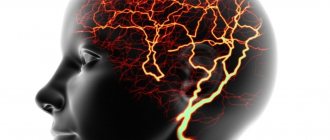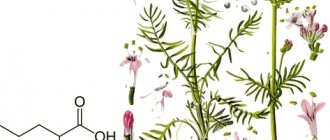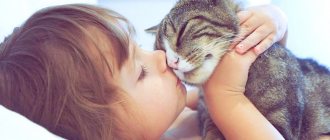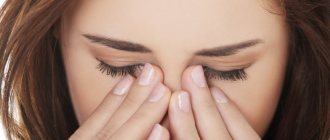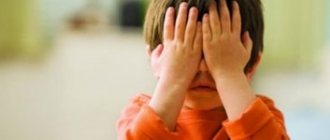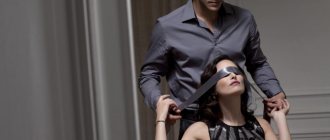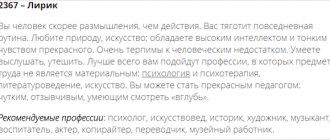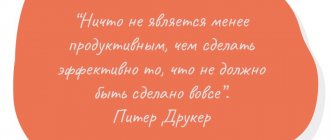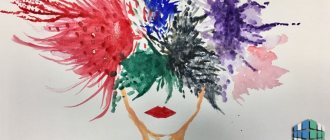Physical activity is good for the body. But, as you know, everything is good in moderation. And excessively intense exercise and heavy lifting can lead to muscle strain. The body does not have time to recover, and pain and muscle spasms occur. It is not surprising that the disease most often affects professional athletes.
- We relieve pain and tension after 1-2 doses;
- Improving muscle metabolism;
- Individual approach to each patient;
Main causesSymptomsConsequencesTreatment
Special offer
More details
REMAINING UNTIL THE PROMOTION ENDS:
Remember! Pre-registration for a treatment session and spinal diagnostics is required.
Register in advance, the number of seats for this unique promotion is LIMITED!
Main reasons
Muscle strain occurs due to the fact that the muscle fibers of individual muscle groups are severely overworked. This process leads to:
- Staying in one static position for a long time (in a car, at a computer).
- Stress (shoulders involuntarily rise and muscle spasms occur).
- Mental fatigue.
- Insufficient training (weak muscles are subject to overstrain even with minor loads).
- Hypothermia.
- Incorrect posture.
People who lead an active and sporty lifestyle are no strangers to the symptoms of muscle fatigue. This internal state negatively affects the emotional and physical background and causes considerable harm to the body.
How to relieve muscle tension during neurosis with massage
A nervous disorder requires careful treatment, so the massage should not be intense. Light rubbing and kneading is enough. The main focus is on the area of the neck, shoulders and head, since it is there that muscle tension during neurosis manifests itself most clearly. Acupressure techniques also have a relaxing effect.
The massage therapist works the tense muscles of the shoulders and neck, gradually moving up to the head, then acts on points located at the temples, in the area of the eye sockets, and on the forehead. The massage ends with circular movements of the hands over the scalp. The patient's discomfort during the procedure is a signal to stop it. The relaxing effect of a massage is enhanced when combined with a calm environment, quiet music and pleasant aromas.
Patients can learn self-massage and acupressure techniques to help themselves at home when attacks of neurosis occur.
Causes of neurosis
Many scientists independently came to the conclusion that the basis of any neurosis is psychological trauma. It can arise virtually anywhere: at work, in society, in family and intimate life, in childhood. Painful impressions remain in the memory for a long time and can affect the rest of life. However, psychological trauma alone is not enough to cause neurosis. This seed must lie on fertile soil. Such soil is the individual predisposition of the individual.
Let us highlight the personal characteristics of people predisposed to neuroses:
- • Sentimentality / hypersensitivity.
- • Mood instability (emotional lability).
- • Anxiety and suspiciousness.
- • Pronounced depressive features.
- • Problems with adaptation to changing conditions (rigidity).
- • Tendency to demonstrate behavior.
How to learn to relieve muscle spasms during neuroses with exercises
Muscle tension goes away when a person engages in meditation or autogenic training. They are associated with a psycho-emotional impact on the entire body. Another direction of working with muscles during neurosis is physical exercises that teach a person to voluntarily relax them. Often people don't even notice how long and how intensely their muscles are tense in everyday life.
Methods have long been developed that teach one to recognize sensations of tension and relaxation, so that in the future a person can, through an effort of will, achieve the desired state during a neurotic attack. For example, progressive muscle relaxation or a method of post-isometric relaxation, which are based on the fact that you can feel relaxation only after strong muscle tension.
Yoga also helps to understand how to relieve stress during neurosis. Exercises must be carried out in a calm environment so that nothing prevents the patient from focusing on his own sensations.
Choice of pharmacological therapy for spastic muscle hypertonicity
The main drugs used to reduce muscle tone are muscle relaxants. According to the mechanism of action, muscle relaxants are distinguished between central action (affect the synaptic transmission of excitation in the central nervous system) and peripheral action (inhibit the direct excitability of striated muscles). When using muscle relaxants, quite significant side effects can occur, which must be carefully assessed when choosing a drug [1, 2].
When choosing antispastic drugs, they mainly take into account their ability to inhibit polysynaptic reflexes (reducing spasticity), while having the least effect on monosynaptic reflexes (muscle strength). An antispastic drug should reduce muscle spasticity with a minimal decrease in muscle strength [3, 4].
Drug therapy is based on the use of tablet and injection forms. Antispastic agents used internally, by reducing muscle tone, can improve motor functions, facilitate care for an immobilized patient, relieve painful muscle spasms, enhance the effect of physical therapy, and prevent the development of contractures [5]. With mild spasticity, the use of muscle relaxants can lead to a significant positive effect, but with severe spasticity, large doses of muscle relaxants may be required, the use of which often causes unwanted side effects. Treatment with muscle relaxants begins with a minimum dose, then it is slowly increased to achieve effect [6].
The centrally acting muscle relaxants most often used in Russia for the treatment of spastic muscle hypertonicity include baclofen, tizanidine, tolperisone, and diazepam [7, 8].
Baclofen (Baklosan, Lioresal) has an antispastic effect mainly at the spinal level. The drug is an analogue of gamma-aminobutyric acid (GABA), which binds to presynaptic GABA receptors, leading to a decrease in the release of excitatory amino acids (glutamate, aspartate) and suppression of mono- and polysynaptic activity at the spinal level, which causes a decrease in spasticity. The drug also exhibits a moderate central analgesic effect. Baclofen is used for spinal and cerebral spastic muscle hypertonicity of various origins. The initial dose is 5–15 mg/day (in one or three doses), then the dose is increased by 5 mg every day until the desired effect is obtained. The drug is taken with meals. The maximum dose of baclofen for adults is 60–75 mg/day. Side effects often include sedation, drowsiness, decreased concentration, dizziness, and often subside during treatment. Nausea, constipation and diarrhea, arterial hypertension, increased ataxia, and the appearance of paresthesia may occur. Caution is required when treating elderly patients, patients who have had a stroke, patients with gastric and duodenal ulcers. Baclofen is contraindicated in case of epilepsy or a history of seizures [9, 10].
For severe spasticity, when the usual oral use of antispastic drugs is not effective, intrathecal administration of baclofen is indicated, which was first proposed in 1984 by R. Penn. To achieve the required concentration of the drug in the cerebrospinal fluid, it is necessary to take quite significant doses of baclofen, which can lead to disturbances of consciousness, drowsiness, and weakness. Therefore, systems have been developed that deliver baclofen directly into the intrathecal space of the spinal cord using the intrathecal baclofen pump system. In this case, the clinical effect is achieved with much smaller doses of baclofen than when using tablet forms [11, 12].
This system consists of a reservoir containing baclofen or a similar drug, a pump (pump), with the help of which the drug is dosed into the intrathecal space of the spinal cord through a lumbar catheter and a power supply. From the reservoir, baclofen enters directly into the cerebrospinal fluid, and its dosage is controlled by a special radiotelemetry device. The amount of drug entering the cerebrospinal fluid can be changed depending on the clinical picture. Baclofen is added to the reservoir after 2–3 months using percutaneous puncture [13].
The use of a baclofen pump improves the speed and quality of walking of patients with unfixed reflex contractures caused by high spasticity of synergistic muscles and imbalance of antagonist muscles. The existing 15-year clinical experience of using baclofen intrathecally in patients who have suffered a stroke indicates the high effectiveness of this method in reducing not only the degree of spasticity, but also pain syndromes and dystonic disorders. A positive effect of the baclofen pump on the quality of life of stroke patients was noted [14].
Tizanidine (Sirdalud) is a centrally acting muscle relaxant, an alpha-2 adrenergic receptor agonist. The drug reduces spasticity due to suppression of polysynaptic reflexes at the level of the spinal cord, which can be caused by inhibition of the release of excitatory amino acids L-glutamate and L-aspartate and activation of glycine, which reduces the excitability of spinal cord interneurons. Tizanidine also has a moderate central analgesic effect. The drug is effective for cerebral and spinal spasticity, as well as for painful muscle spasms. The initial dose of the drug is 2–6 mg/day in one or three doses; with individual selection, the dose is increased on days 3–4 by 2 mg. When taken orally, the effect of the drug appears within 30–45 minutes, the maximum effect occurs within 1–2 hours. The average therapeutic dose is 12–24 mg/day, the maximum dose is 36 mg/day. Side effects may include drowsiness, dry mouth, dizziness and decreased blood pressure, which limits the use of the drug for post-stroke spasticity. The antispastic effect of tizanidine is comparable to the effect of baclofen, however, tizanidine, with adequate dosage selection, is better tolerated, since it does not cause general muscle weakness and does not increase muscle weakness in the paralyzed limb [15, 16].
Tolperisone (Mydocalm) is a centrally acting antispastic drug that inhibits the caudal part of the reticular formation and has N-cholinolytic properties. Tolperisone reduces the activity of spinal neurons involved in spasticity by limiting the flow of sodium across the nerve cell membrane. The most commonly used dose is 300–450 mg/day in two or three doses. A decrease in muscle tone when tolperisone is prescribed is sometimes accompanied by a vasodilator effect, which should be taken into account when prescribing to patients with a tendency to arterial hypotension. The drug can also cause or worsen urinary incontinence in patients [17].
The main side effect of baclofen, tizanidine and tolperisone is the rapid onset of muscle weakness, and in each case the doctor must find a balance between decreased tone and increased weakness. The balance curve between a decrease in spastic tone and an increase in muscle weakness in patients with an increase in the dose of Mydocalm, Sirdalud or Baclofen shows that the most rapid increase in weakness occurs when taking Baclofen, and the mildest drug that allows you to effectively select an individual dosage is Mydocalm. In all cases, given the presence of a narrow therapeutic window, the course of treatment begins with a small dose of the drug, gradually increasing it until a clear antispastic effect is achieved, but not until weakness appears [18, 19].
Diazepam (Realanium, Relium, Sibazon) is a muscle relaxant because it has the ability to stimulate reduced presynaptic inhibition at the spinal level. It does not have direct GABAergic properties, increases the concentration of acetylcholine in the brain and inhibits the reuptake of norepinephrine and dopamine at synapses. This leads to increased presynaptic inhibition and is manifested by a decrease in stretch resistance and an increase in range of motion. Diazepam also has the ability to reduce pain caused by muscle spasms. Along with a decrease in muscle tone, lethargy, dizziness, impaired attention and coordination develop due to the toxic effect on the central nervous system. This significantly limits the use of diazepam as a muscle relaxant. It is used mainly for the treatment of spasticity of spinal origin when a short-term decrease in muscle tone is necessary. For the treatment of spasticity, a dose of 5 mg once or 2 mg 2 times a day is prescribed. The maximum daily dose can be 60 mg. At high doses, disturbances of consciousness, transient liver dysfunction and blood changes may occur. The duration of treatment is limited due to the possible development of drug dependence [20].
Clonazepam is a benzodiazepine derivative. Clonazepam has a sedative, central muscle relaxant, and anxiolytic effect. The muscle relaxant effect is achieved by enhancing the inhibitory effect of GABA on the transmission of nerve impulses, stimulating benzodiazepine receptors located in the allosteric center of the postsynaptic GABA receptors of the ascending activating reticular formation of the brain stem and interneurons of the lateral horns of the spinal cord, as well as reducing the excitability of the subcortical structures of the brain and inhibition of polysynaptic spinal reflexes.
The rapid onset of drowsiness, dizziness and addiction limits the use of this drug. To reduce the occurrence of possible adverse reactions, it is necessary to achieve a therapeutic dose by slow titration over two weeks. For oral administration to adults, an initial dose of no more than 1 mg/day is recommended. Maintenance dose: 4–8 mg/day. It is possible to prescribe small doses in combination with other muscle relaxants. Clonazepam is effective for paroxysmal increases in muscle tone. Contraindicated in acute diseases of the liver, kidneys, myasthenia gravis [21].
Dipotassium clorazepate (Tranxen) is a benzodiazepine analogue, transforms into the main metabolite of diazepam, has greater activity and duration of antispastic action than diazepam. It has been noted to have a good effect in treatment in the form of a decrease in phasic stretch reflexes and has a slight sedative effect. The initial dose is 5 mg 4 times a day, then reduced to 5 mg 2 times a day [22].
Dantrolene is an imidazoline derivative that acts outside the central nervous system, mainly at the level of muscle fibers. The mechanism of action of dantrolene is to block the release of calcium from the sarcoplasmic reticulum, which leads to a decrease in the degree of contractility of skeletal muscles, a reduction in muscle tone and phasic reflexes, and an increase in the range of passive movements. An important advantage of dantrolene in relation to other muscle relaxants is its proven effectiveness against spasticity not only of spinal, but also of cerebral origin. The initial dose is 25 mg/day; if tolerated, the dose is increased over 4 weeks to 400 mg/day. Side effects: drowsiness, dizziness, nausea, diarrhea, decreased glomerular filtration rate. A serious danger, especially in elderly patients at a dose of more than 200 mg/day, is the hepatotoxic effect, so liver function should be regularly monitored during treatment. Elimination of dantrolene is 50% due to hepatic metabolism, and therefore it is contraindicated in liver diseases. Caution should also be exercised in case of severe cardiac or pulmonary diseases.
Catapresan - used mainly for spinal injuries, acts on alpha-2 agonists in the brain, has presynaptic inhibition. Side effects include decreased blood pressure and depression. The initial dose is 0.05 mg 2 times a day, the maximum is 0.1 mg 4 times a day.
Temazepam - interacts with benzodiazepine receptors of the allosteric center of postsynaptic GABA receptors located in the limbic system, ascending activating reticular formation, hippocampus, interneurons of the lateral horns of the spinal cord. As a result, channels are opened for incoming currents of chlorine ions and thus the action of the endogenous inhibitory transmitter, GABA, is potentiated. The recommended dose is 10 mg 3 times a day. Its combination with baclofen is effective [23, 24].
The main drugs used to treat spastic muscle hypertonicity are presented in Table.
Thus, the choice of drug is determined by the underlying disease, the severity of muscle spasticity, as well as side effects and characteristics of the action of a particular drug.
For example, tizanidine and baclofen have a greater effect on the tone of the extensor muscles, therefore, in cases of significant hypertonicity of the flexor muscles of the arm, mild spasticity of the leg muscles, their use is not indicated, since a slight increase in the tone of the extensor muscles of the leg compensates for muscle weakness in the leg and stabilizes the patient's gait. In this case, the means of choice are methods of physical impact on the muscles of the upper limb.
In the treatment of cerebral spasticity, Sirdalud and Baclofen are most often used, and for spinal spasticity - Sirdalud and Baclofen. Mydocalm has an important advantage over other muscle relaxants, which does not have a sedative effect and has a favorable tolerability spectrum, therefore it is the drug of choice for treatment on an outpatient basis and for the treatment of elderly patients.
A combination of several drugs is acceptable, which allows you to effectively reduce tone at lower doses of each drug. Combining drugs with different points of application, from centers in the brain to muscles, can lead to a cumulative therapeutic effect.
The effectiveness of oral antispastic drugs decreases with their long-term use; there is often a need for increasing dosages to maintain the initial clinical effect, which is accompanied by an increase in the frequency and severity of adverse reactions [25–27].
In a situation where spasticity is local in nature and the systemic effect of oral muscle relaxants is undesirable, local methods of exposure are preferable, one of which is the local administration of botulinum toxin [28, 29].
Literature
- Skoromets A. A., Amelin A. V., Pchelintsev M. V. et al. Prescription reference book for a neurologist. SPb: Polytechnic. 2000. 342 p.
- Shtok V.N. Pharmacotherapy in neurology: A practical guide. 4th ed., revised. and additional M.: Medical Information Agency LLC, 2006. 480 p.
- Methodological recommendations for organizing neurological care for patients with strokes in St. Petersburg / Ed. V. A. Sorokoumova. SPb: St. Petersburg, 2009. 88 p.
- Lehmann-Horn F., Ludolf A. Treatment of diseases of the nervous system. M.: MEDpress-inform. 2005. 528 p.
- O'Dwyer N., Ada L., Neilson P. Spasticity and muscle contractur in stroke // Brain. 2006. Vol. 119. P. 1737–1749.
- Damulin I.V. Spasticity syndrome and the main directions of its treatment // Journal of Neurology and Psychiatry named after. S. S. Korsakova. 2003. No. 12. P. 4–9.
- Zavalishin I. A., Barkhatova V. P., Shitikova I. E. Spastic paresis // In the book. Multiple sclerosis. Selected issues of theory and practice. Ed. I. A. Zavalishina, V. I. Golovkina. Elf IPR LLC. 2000. pp. 436–455.
- Levin O. S. Basic drugs used in neurology: Handbook. M.: MEDpress-inform, 2007. 336 p.
- Boyko A. N., Lashch N. Yu., Batysheva T. T. Increased muscle tone: etiology, pathogenesis, correction // Handbook of a polyclinic doctor. 2004. T. 4. No. 1. P. 28–30.
- Damulin I.V. Spasticity syndrome and the main directions of its treatment // Journal of Neurology and Psychiatry named after. S. S. Korsakova. 2003. No. 12. P. 4–9.
- Selected lectures on neurology: ed. V. L. Golubeva. M.: EidosMedia, 2006. 624 p.
- Parziale J., Akelman E., Herz D. Spasticity: pathophysiology and management // Orthopedics. 2003. Vol. 16. P. 801–811.
- Katz R., Rymer Z. Spastic hypertonia: mechanisms and measurement // Arch. Phys. Med. Rehab. 2009. Vol. 70. P. 144–155.
- Barnes M. An overview of the clinical management of spasticity // In: Upper motor neuron syndrome and spasticity. Cambridge University Press. 2001. P. 5–11.
- Parfenov V. A. Pathogenesis and treatment of spasticity // Russian Medical Journal. 2011. T. 9. No. 25. pp. 16–18.
- Kadykov A. S., Shakhparanova N. V. Drug rehabilitation of patients with spastic paresis. In the book: Upper motor neuron syndrome. Ed. I. A. Zavalishina, A. I. Osadchikh, Y. V. Vlasova. Samara: Samara department. Literary Fund, 2005. pp. 304–315.
- Kadykov A. S., Chernikova L. A., Sashina M. B. Rehabilitation of patients with central post-stroke pain syndrome // Rehabilitation. Collection of scientific works (annual publication), No. 1. M.: Publishing house RGMU, 2003. P. 357–359.
- Sashina M. B., Kadykov A. S., Chernikova L. A. Post-stroke pain syndromes // Atmosphere. Nervous diseases. 2004. No. 3. P. 25–27.
- Kamchatnov P.R. Spasticity - modern approaches to therapy // Russian Medical Journal. 2004. T. 12. No. 14. P. 849–854.
- Gusev E.I., Skvortsova V.I., Platinova I.A. Therapy of ischemic stroke // Consilium medicum. 2003, special release. pp. 18–25.
- Kadykov A. S., Chernikova L. A., Sashina M. B. Post-stroke pain syndromes // Neurological Journal. 2003. No. 3. P. 34–37.
- Musaeva L. S., Zavalishin I. A. Treatment of spasticity in multiple sclerosis // Proceedings of the 9th symposium “Multiple sclerosis: treatment and recovery.” SPb: Faces of Russia. 2000. pp. 59–60.
- Stroke. Principles of diagnosis, treatment and prevention / Ed. N.V. Vereshchagina, M.A. Piradova, Z.A. Suslina. M.: Intermedica, 2002. 208 p.
- Sommerfeld DK, Eek EU-B., Svensson A.-K. et al. Spasticity after stroke: its occurrence and association with motor impairments and activity limitations // Stroke. 2004. Vol. 35. P. 134–140.
- Bakheit A., Zakine B., Maisonobe P. The profile of patients and current practice of treatment of upper limb muscle spasticity with botulinum toxin type A // Int. J. Rehabil. Res. 2010. Vol. 33. P. 199–204.
- Malakhov V. A. Muscular spasticity in organic diseases of the nervous system and its correction // International Neurological Journal. 2010. No. 5. P. 67–70.
- Davis T., Brodsky M., Carter V. Consensus statement on the use of botulinum neurotoxin to treat spasticity in adults // Pharmacy and Therapeutics. 2006. Vol. 31. P. 666–682.
- Childers M., Brashear A., Jozefczyk P. Dose-dependent response to intra-muscular botulinum toxin type A for upper limb spasticity after stroke // Arch. Phys. Med. Rehab. 2004. Vol. 85. P. 1063–1069.
- Kadykov A. S. Muscle relaxants in the rehabilitation of patients with post-stroke motor disorders // Journal of Neurology and Psychiatry named after. S. S. Korsakova. 1997. No. 9. pp. 53–55.
A. A. Korolev, Candidate of Medical Sciences
FSBI All-Russian Center for Emergency and Radiation Medicine named after. A. M. Nikiforova" EMERCOM of Russia, St. Petersburg
Contact information about the author for correspondence
Water treatments for muscle relaxation
For neuroses, it is recommended to take warm, relaxing baths. Infusions of medicinal herbs or aromatic oils can be added to the water, which enhances the relaxing effect.
It is also useful to visit a Russian bathhouse or Finnish sauna for muscle relaxation. Of course, in the absence of contraindications due to other concomitant diseases. Hot steam or dry heat increases blood flow in the muscles and normalizes their tone.
To the list of articles
Other articles
- Is obsessive thought neurosis curable?
- How to help yourself with neurosis?
Treatment of neurosis
Being a very specific pathology, neurosis requires an integrated approach to treatment. The first step in the right direction is to contact a specialist (neurologist, psychiatrist or psychotherapist). It doesn’t matter who exactly you contact at the beginning, because in the end you will definitely be sent into the right hands. Treatment is prescribed taking into account the individual characteristics of the patient and the identified symptoms. The following methods for treating neuroses are in use:
- • Drug influence. As a rule, at the initial stage, the doctor may prescribe a course of tranquilizers or other potent drugs.
- • Individual psychotherapy aimed at resolving the conflict situation underlying the disease.
- • Herbal therapy. Motherwort, aloe, lemon balm, peony and a number of other herbs have a proven healing effect.
- • General course of strengthening the body. The most general concept includes physical exercise, spa treatment, a special diet, and much more.
- • Physiotherapy.
To be guaranteed to get rid of neurosis and avoid its relapse, a person must develop positive thinking and become stress-resistant.
What is a tension headache?
This type of headache occurs in 80% of people. It is quite easy to determine. The main difference between tension headaches is aching pain, a feeling of strong compression of the head. A characteristic feature of tension headaches is that they occur regardless of the time of day. However, it reminds itself most often after lunch.
It can be recognized by the following symptoms:
- In most cases, pain is felt in the forehead, temples, and back of the head.
- Has a pressing character.
- Sometimes it causes loss of appetite, less often it causes disruption of the stomach and intestines.
- The pain does not get worse during physical activity.
- Very often people complain that they feel a lot of pressure, but not pain.
- If you palpate, the person will complain of pain in the muscles of the neck and head.
In turn, HDN is divided into 2 types:
- Episodic. Almost always occurs after stress and is of moderate intensity. It usually goes away without specific treatment or is quite easily treated with conventional painkillers.
- Chronic. It is associated with systematic psycho-emotional stress, depression, and anxiety. Chronic tension headache can be recognized by characteristic pressing and squeezing sensations in the cloudy-occipital localization.
Trigeminal neuralgia
This is another lesion of the nerve fiber structure, which is often chronic and accompanied by periods of exacerbation and remission.
It has several causes, which are divided into idiopathic - when a nerve is pinched, and symptomatic.
The main symptom of neuralgia is paroxysmal sensations in the form of pain on the face and in the mouth.
Pain sensations have characteristic differences. They are “shooting” and resemble an electric shock; they arise in those parts that are innervated by the n.trigeminus. Having appeared once in one place, they do not change localization, but spread to other areas, each time following a clear, monotonous trajectory.
The nature of the pain is paroxysmal, lasting up to 2 minutes. At its height, a muscle tic is observed, that is, small twitching of the facial muscles. At this moment, the patient has a peculiar appearance: he seems to freeze, but does not cry, does not scream, and his face is not distorted from pain. He tries to make a minimum of movements, since any of them increases the pain. After the attack there is a period of calm.
Such a person performs the act of chewing only with the healthy side, at any time. Because of this, compaction or muscle atrophy develops in the affected area.
The symptoms of the disease are quite specific, and its diagnosis is not difficult.
Therapy for neuralgia begins with taking anticonvulsants, which form its basis. Their dose is subject to strict regulation and is prescribed according to a specific scheme. Representatives of this pharmacological group can reduce agitation and the degree of sensitivity to painful stimuli. And, therefore, reduce pain. Thanks to this, patients have the opportunity to freely eat and talk.
Physiotherapy is also used. If this treatment does not give the desired result, proceed to surgery.
Disorders of facial innervation
A neurotic face may develop due to damage to the nerves that innervate it. Most often these are the trigeminal and facial nerves.
The trigeminal nerve is the 5th pair of cranial nerves. It is the largest of all 12 pairs of these nerve fibers.
N. trigeminus arises symmetrically on both sides of the face and consists of 3 large branches: the ophthalmic, maxillary and mandibular nerves. These three large processes innervate a fairly large area:
- skin of the forehead and temples;
- mucous membrane of the oral and nasal cavities, sinuses;
- tongue, teeth, conjunctiva;
- muscles - chewing, floor of the mouth, palatine, tympanic membrane.
Accordingly, when it is damaged, pathological sensations arise in these elements.
Facial nerve – 7th pair of cranial nerves. Its branches surround the temporal and ocular region, the zygomatic arch, and descend to and behind the lower jaw. They innervate all facial muscles: auricular, orbicularis and zygomatic, chewing, upper lip and corners of the mouth, cheek. As well as the muscles of the lower lip and chin, around the mouth, the muscles of the nose and laughter, and the neck.
N. facialis is also paired, and is located on both sides of the face.
In 94% of cases, the damage to these nerve fibers is unilateral, and only 6% is a bilateral process.
Disruption of innervation can also be primary or secondary.
Primary is the lesion that initially involves the nerve. This could be hypothermia or strangulation.
Secondary damage develops as a consequence of other diseases.
Another reason for the development of facial neurosis is neurogenic and mental disorders. When unpleasant sensations in the face and head occur against the background of psycho-emotional arousal, shock, or as a result of stressful situations.
Classification
Taking into account the preferential localization, the following types of muscle neurosis are distinguished:
- Facial. The facial and chewing muscles are involved.
- Chest. Symptoms resembling intercostal neuralgia are observed.
- Cervical. Respiratory disturbances are noted, and a lump may appear in the throat.
- In the spine area. The cervical and lumbar regions are most affected. Sometimes the pain spreads along the entire spinal column.
- In the area of the limbs. Manifestations are variable, most often one or both paired limbs (upper or lower) are affected.
Diagnostics
Making a diagnosis can be difficult due to the variety of symptoms and similarities with other pathological processes. Along with psychologists and psychiatrists, orthopedists, neurologists, maxillofacial surgeons and other specialists are involved in the examination, depending on the location of painful sensations. The disease is diagnosed after excluding organic disorders.
In the process of differential diagnosis, a neurological examination, electromyography and other studies are performed. Most often, muscle neurosis must be distinguished from myositis, myalgia and neuralgia. If the back is involved, radiography is required to identify osteochondrosis, disc herniation and other lesions.
